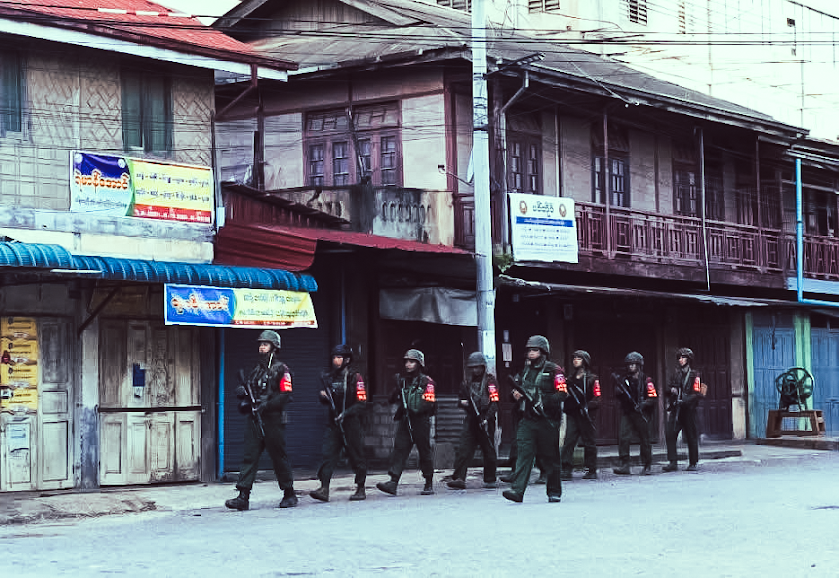“Myanmar Spring Chronicle – April 20 Overview”,
published by MoeMaKa on April 21, 2025:
🔁 Lashio Handover and China’s Role
The recent transfer of control of Lashio back to Myanmar’s military junta appears to be the result of a January negotiation in Kunming, China, between the junta and the MNDAA (Myanmar National Democratic Alliance Army, also known as the Kokang Army).
Leading up to the Thingyan holiday, as civil administrative offices, hospitals, and utilities began quietly relocating operations from Lashio, it became increasingly evident that a handover was imminent.
A news agency had previously reported in late January that MNDAA would withdraw from Lashio by the end of June, though no official confirmation followed. MNDAA personnel publicly denied knowledge of any withdrawal deal at the time, insisting they were continuing governance and security duties as usual.
Later, during a Chinese New Year celebration in Tamonye, a Chinese delegate mentioned the planned MNDAA withdrawal from Lashio—an indication of Beijing’s involvement.
On Myanmar New Year’s Day, Chinese Special Envoy Deng Xijun reportedly entered the country via the border to witness and possibly mediate the handover process, a clear sign of China’s direct and visible role. This level of involvement—especially in a politically sensitive military matter—is unprecedented and underscores how Beijing’s influence has grown amid the junta’s battlefield losses.
🇨🇳 China’s Strategic Interests in Myanmar
China’s objection to the MNDAA seizure of Lashio was first publicly hinted at in leaked notes from an August 2024 meeting between the United Wa State Army (UWSA) and Chinese officials. In that meeting, Deng Xijun reportedly expressed concern about the central government’s collapse if the military were defeated, stating that Beijing did not support Lashio’s capture.
This view is consistent with China’s overarching goal of preserving central authority in Myanmar, not necessarily supporting democracy or the junta itself. China’s main concern is avoiding instability along its borders and preventing Western influence from gaining a foothold in its neighboring countries.
While some analysts claim China opposes democratic reforms in Myanmar, the more accurate view is that China favors any government—military or otherwise—that can maintain order and offers reliable diplomatic relations. In fact, during the NLD government’s term (2016–2020), China enjoyed good relations with Aung San Suu Kyi’s administration, signing over 30 agreements, including joint infrastructure under the Belt and Road Initiative (BRI).
However, policies shifted following the February 1, 2021, coup, and particularly after August 2024.
🧭 The Bigger Picture Behind Lashio’s Return
As MNDAA gained ground in its military campaign, and as allied groups like the TNLA advanced in Kyaukme, Hsipaw, and Nawnghkio, China ramped up pressure to contain the resistance offensives. It appears the junta accepted Chinese mediation to at least pause or slow the collapse of its control in northern Shan.
It is believed China urged the junta to hold elections in exchange for continued support. After nearly four years of delays, the junta has now agreed to hold elections by the end of 2025.
These developments help explain why MNDAA was pressured to return Lashio—it appears to be part of a larger strategy coordinated by China.
🎯 MNDAA’s Priorities and Autonomy
MNDAA’s acceptance of the ceasefire and withdrawal from Lashio likely reflects their core focus: securing autonomy in their traditional Kokang territory, rather than engaging in Myanmar-wide revolution.
Many ethnic armed groups share this view. They seek self-governance in their regions, not necessarily full involvement in the broader Burmese political system.
This position also reveals why MNDAA may have agreed to China’s pressure: they prioritized long-term control over their own land rather than holding a major city like Lashio, which sits outside their core territory.
🤐 Silent Agreement: Kunming Accord
Reports suggest that the January 2025 Kunming Agreement between the junta and MNDAA includes:
-
MNDAA withdrawing from Lashio
-
The junta refraining from airstrikes or offensives in remaining MNDAA-held areas
-
Both sides agreeing to not publicize the deal
Because of this last clause, no official statements have been issued by either party, making full confirmation difficult.
🧩 Final Thoughts
China’s involvement in Myanmar is not about choosing sides—it’s about ensuring border stability and long-term strategic control. While MNDAA’s handover of Lashio has frustrated many who hoped for sustained revolutionary momentum, it also highlights the complex geopolitical pressures that shape Myanmar’s internal conflicts.
Whether this sets a precedent for other armed groups remains to be seen—but it reinforces that China’s priorities will continue to influence the trajectory of Myanmar’s war and peace process.

